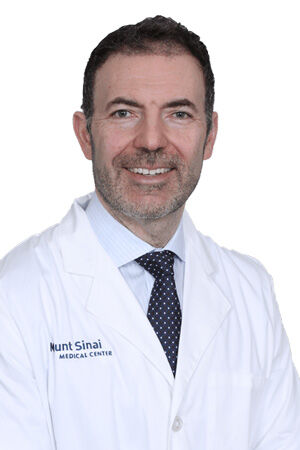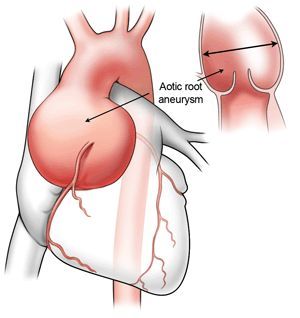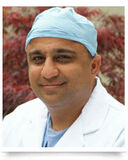“Will Exercise & Heart Valve Surgery Cause My Aorta To Grow?” asks Joseph
Written By: Adam Pick, Patient Advocate, Author & Website Founder
Medical Expert: Eric Weiss, MD, Mount Sinai Medical Center
Page Last Updated: July 8, 2025
Aortic aneurysms can be life-threatening. You might recall that an aortic aneurysm pre-maturely claimed the life of John Ritter, one of my favorite comedians best known for his portrayal of Jack Tripper on Three’s Company.
Specific to aneurysms, heart valve surgery, and exercise, Joseph sent me this question, “Hi Adam – I had mitral valve repair surgery in April of 2017. After a follow-up in July, my cardiologist told me that my aorta was dilated at 4.5 centimeters and surgery might be necessary at 5 to 5.5 centimeters. Could my repair in April and/or strenuous prolonged exercise cause the aorta to grow?”
To answer Joseph’s question, I met with Dr. Eric Weiss, a leading cardiac surgeon who specializes in aortic valve and aorta procedures. Here are the highlights from my very interesting discussion with Dr. Weiss.
There were so many great points in this video – the correlation of mitral valve disease and aortic aneurysms, connective tissue disorders, genetic testing, timing aorta repair, exercise, and potential strain on the aorta. Many thanks to Joseph for his question and a special thanks to Dr. Weiss for taking the time to share his research and clinical experiences with our community.
Lastly, if you do have an aortic aneurysm, please be very careful if weight lifting (that causes you to grunt or strain) is part of your exercise routine. As I always say, “Better safe than sorry!”
Related Links:
- Ask Dr. Weiss: Multiple Minimally-Invasive Heart Valve Surgery
- See Dr. Weiss’ Interactive Surgeon Profile
Keep on tickin!
Adam
P.S. For the hearing impaired members of our patient community, I posted the written transcript of my interview with Dr. Weiss below.
Adam Pick: Hi, everybody. It’s Adam with HeartValveSurgery.com. I’m thrilled to be here with Dr. Eric Weiss, an aortic valve and aorta expert. We’re answering questions, Dr. Weiss, that came in on our Facebook page and at my blog, all about heart valve disease and related cardiac disorders. We got a question from Joseph. By the way, thanks for being here.

Dr. Eric Weiss: Thank you for having me. It’s a thrill to be here.
Adam Pick: Joseph writes in, “I had mitral valve regurgitation in April of 2017. After a followup in July, my cardiologist said to me my aorta valve was dilated at 4.5 centimeters,” I think what he may have meant was his aorta, “and surgery might be necessary at 5 to 5.5 centimeters. Could this repair in April and/or strenuous prolonged exercise cause the aorta to grow?”
Eric Weiss: Well, that is a really interesting question. Adam, thanks for having me, and thanks for all that you do for patients with heart valve disease and aortic disease. I appreciate being here and having the opportunity to answer this question. Thanks for the question to Joseph. There’s a lot of points to that question and brings up a lot of interesting aspects. I think the first is the correlation between mitral valve disease and aortic disease, or aortic aneurysms. We don’t think of that often, but there are some conditions, particularly genetic aortopathies, that can lead to a stretching of the aorta and lead to stretching of all of the valves of the heart and parts of the heart. I would say it’s rare for mitral valve disease to be linked to aortic disease. We often think of aneurysms being linked to aortic valve disease, but if someone has one of these connective tissue disorders or aortopathies, they may be as well prone to mitral valve dilatation. The only way to know that is to do genetic testing and/or look at Joseph’s family history to determine whether or not that’s a problem.

To answer his question about when the aorta needs to be repaired or replaced, usually the typical indications are about 5.5 centimeters, but in patients who have genetic aortopathies we generally bring that indication lower, so even as low as 4.5 centimeters for patients who have genetic predisposition or weakened connective tissue. For that reason, it is an important question, and it is an important thing to know.
In response to Joseph’s question about whether or not prolonged exercise or strain can cause the aorta to grow, that’s an important question. It’s unlikely that the surgery he had before had any effect on the aortic size. We don’t do anything to the aorta when we do mitral valve surgery – that’s probably just a condition that’s developed over time – but strenuous strain or exercise can sometimes cause aortic dilatation. We say that usually it’s extreme heavy lifting,. the type of lifting that causes you to grunt or strain and really stress, things like half to two-thirds of your body weight. That can sometimes cause elevations in the blood pressure, which can cause the aorta to grow. We always tell people with aneurysms to try to avoid those types of heavy lifting activities. On the other hand, exercise, raising your heart rate, is actually very good for your aortic health because it lowers your blood pressure and tends to put less stress and strain on your aorta over time. Exercise and heart rate elevation is good, but extreme heavy lifting – the kind that causes you to grunt or strain – is generally bad.
Adam Pick: Joseph, I hope that helped you. I know it helped me and the other members of our community. Dr. Weiss, thanks again for all the great work that you’re doing; really appreciate you.
Eric Weiss:Thank you so much.
|
Daniel Janosko Sr. says on March 29th, 2018 at 8:37 pm |
|
i had the aortic mechanical heart valve replacement done about 12yrs ago was lifting weights about 6 months after surgery never had a problem it really helped in controlling blood pressure and i’m 59 yrs old probably fitter now then when i was about 38yrs old |
 |











